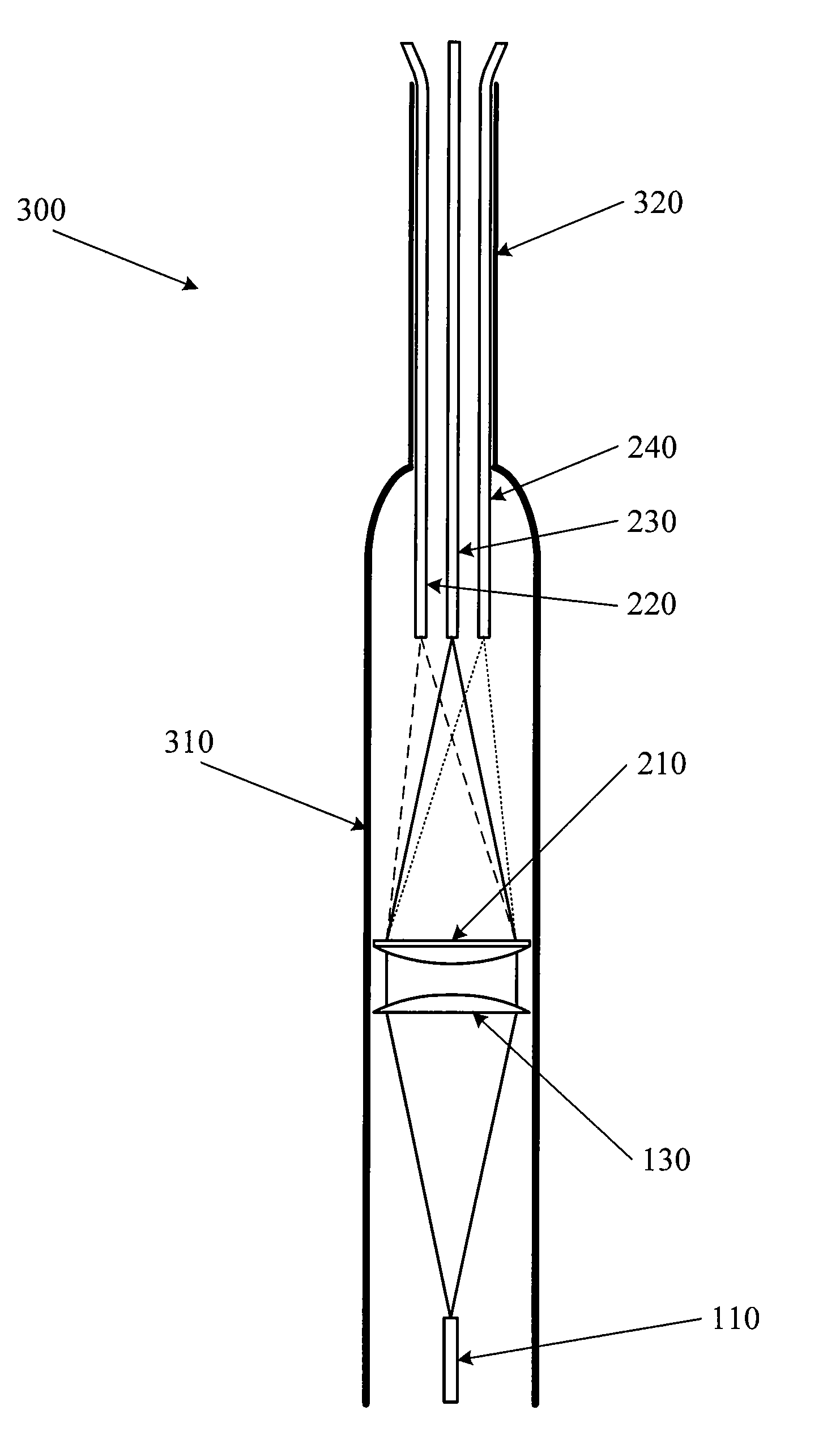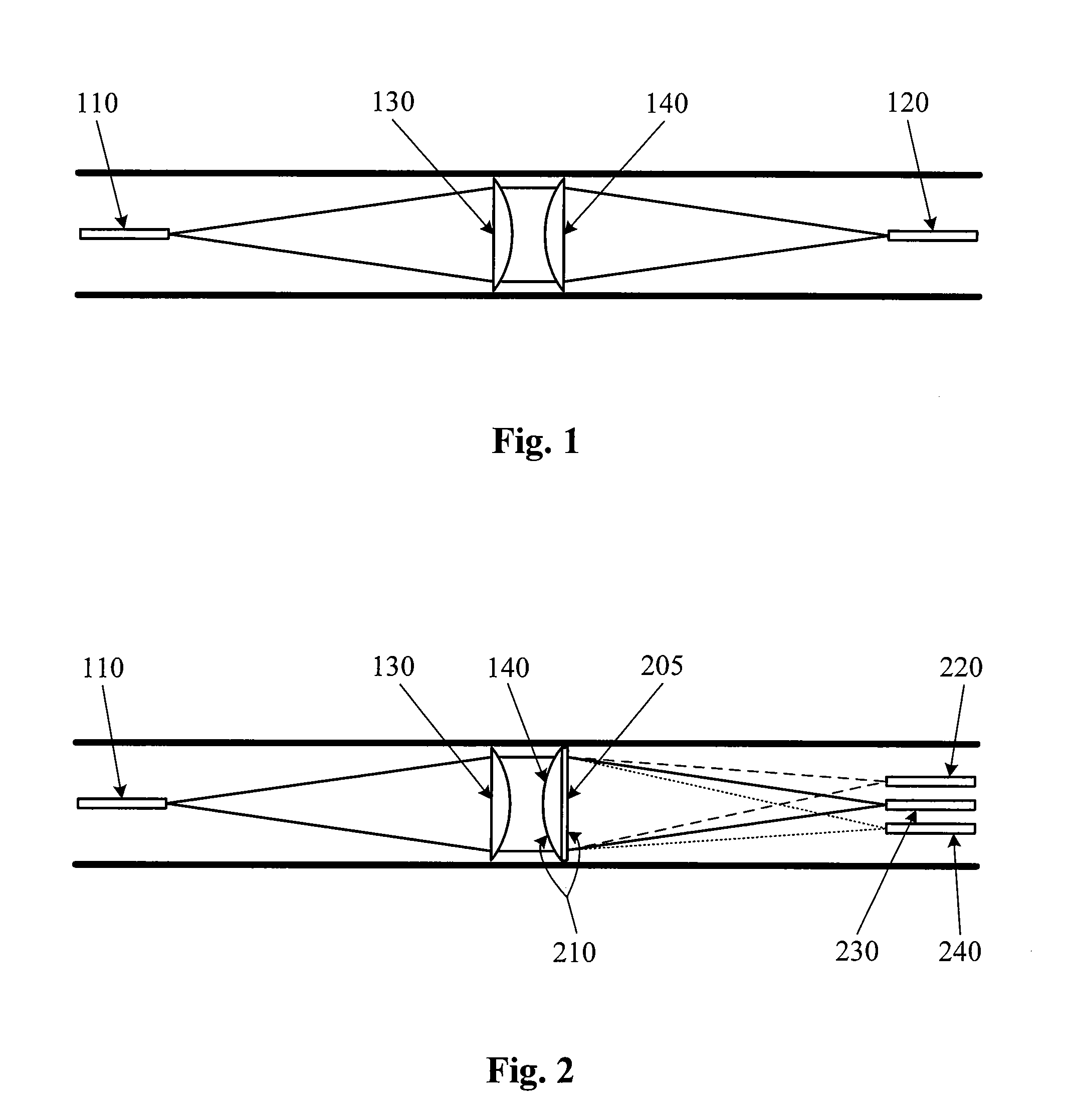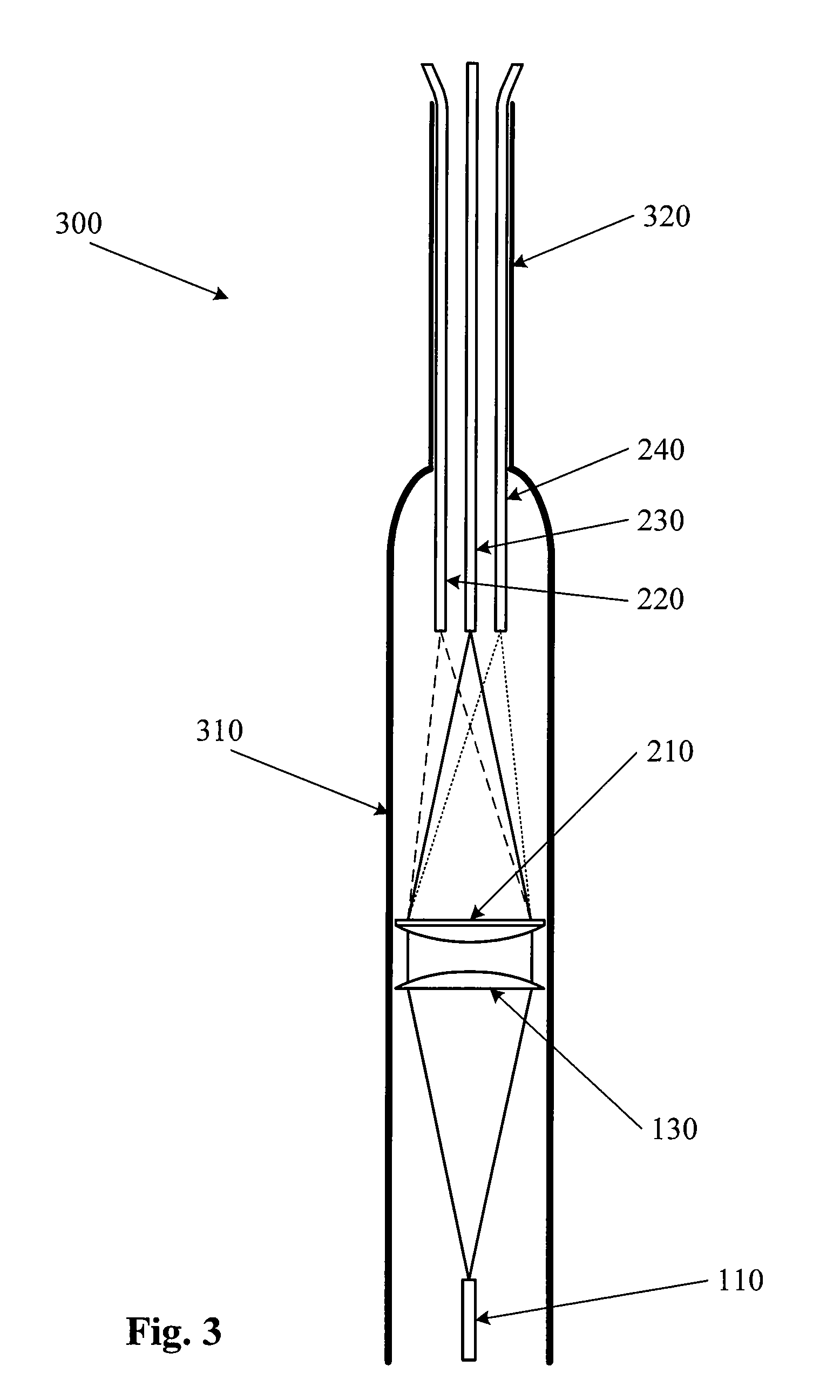Multi-spot ophthalmic laser probe
a laser probe and multi-spot technology, applied in the field of laser probes, can solve the problems of long time to cover the desired retinal area, loss of central vision, inability to see fine details, read, or recognize faces,
- Summary
- Abstract
- Description
- Claims
- Application Information
AI Technical Summary
Benefits of technology
Problems solved by technology
Method used
Image
Examples
Embodiment Construction
[0029]Reference is now made in detail to the exemplary embodiments of the invention, examples of which are illustrated in the accompanying drawings. Wherever possible, the same reference numbers are used throughout the drawings to refer to the same or like parts.
[0030]FIG. 1 is cross section view of a simple fiber to fiber imaging system consistent with the principles of the present invention. In the embodiment of FIG. 1, the system has two fibers 110, 120, and two lenses 130, 140. Fiber 110 emits a beam of diverging light that originates from a laser source (not shown). The diverging beam is collimated by lens 130. As is commonly known, collimated light is light whose rays are parallel with a planar wave front. This collimated beam is focused by lens 140 into a small diameter spot at the entrance face of receiving fiber 120. In this case, the lenses 130, 140 are each plano-convex aspheric lenses. In a plano-convex aspheric lens, one surface is planar and the other surface is convex...
PUM
 Login to View More
Login to View More Abstract
Description
Claims
Application Information
 Login to View More
Login to View More - R&D
- Intellectual Property
- Life Sciences
- Materials
- Tech Scout
- Unparalleled Data Quality
- Higher Quality Content
- 60% Fewer Hallucinations
Browse by: Latest US Patents, China's latest patents, Technical Efficacy Thesaurus, Application Domain, Technology Topic, Popular Technical Reports.
© 2025 PatSnap. All rights reserved.Legal|Privacy policy|Modern Slavery Act Transparency Statement|Sitemap|About US| Contact US: help@patsnap.com



